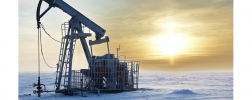Temperature range and temperature limit for pressure sensors – is there a difference? My intuitive answer would be: Yes! The first term describes a section and the second its border. On second glance, however, I have to conclude that both words ultimately express the …
Temperature
Diaphragm seals for stable flow measurement in deep seas
Jing Lyu | ApplicationsDiaphragm seals make it possible to adapt measuring instruments to even the most extreme conditions. One example is the deep-sea extraction of oil and natural gas. For offshore companies in this industry, a particular OEM company manufactures flow measuring systems …
Temperature calibration: Thermocouples vs. resistance thermometers
Katja Strecke | Know-howIn temperature calibration, high demands are placed on reference thermometers in terms of accuracy and reproducibility and thus long-term stability. Therefore, RTDs (“resistance temperature detectors”) – here specifically platinum resistance thermometers – and …
Temperature calibration with reference probes, dry-well calibrators and baths
Katja Strecke | Know-howCan dry-well calibrators and calibration baths be used as internal references? Temperature dry-well calibrators and baths are a practical solution for temperature calibrations. This is true both in the field and in laboratories, as they provide a free-standing, stable …
Pressure and temperature measurement at extremely low ambient temperatures
Christopher Ott | Know-howStandard pressure gauges and thermometers generally cope with ambient temperatures down to -40 °C. But what must be the features of a mechanical measuring instrument that works perfectly well in polar climates with even lower temperatures? This can be explained using …






